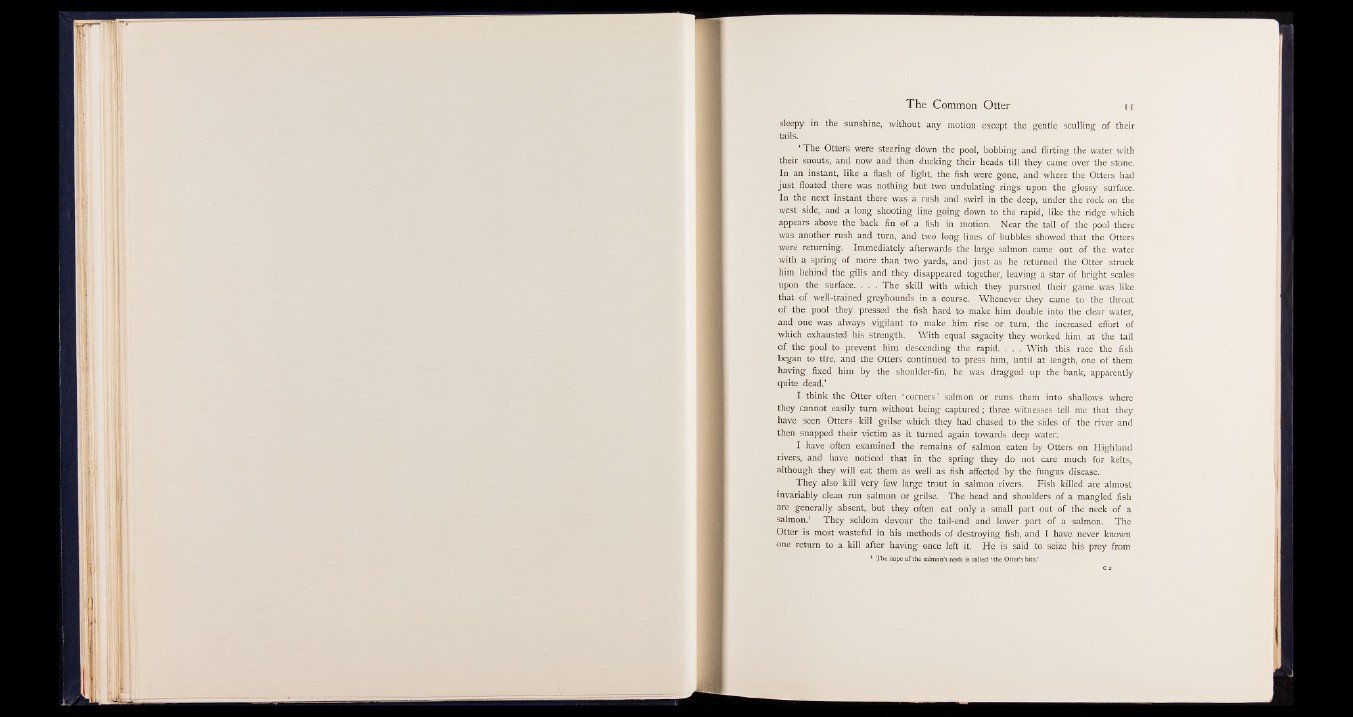
The Common Otter 11
sleepy in the sunshine, without any motion except the gentle sculling of their
tails.
‘ The Otters were steering down the pool, bobbing and flirting the water with
their snouts, and now and then ducking their heads till they came over the stone.
In an instant, like a flash of light, the fish were gone, and where the Otters had
just floated there was nothing but two undulating rings upon the glossy surface.
In the next instant there was a rush and swirl in the deep, under the rock on the
west side, and a long shooting line going down to the rapid, like the ridge which
appears above the back fin of a fish in motion. Near the tail of the pool there
was another rush and turn, and two long lines of bubbles showed that the Otters
were returning. Immediately afterwards the large salmon came out of the water
with a spring pf more than two yards, and just as he returned the Otter struck
him behind the gills and they disappeared together, leaving a star of bright scales
upon the surface. . . . The skill with which they pursued their game was like
that of well-trained greyhounds in a course. Whenever they came to the throat
of the pool they pressed the fish hard to make him double into the clear water,
and one was always vigilant to make him rise or turn, the increased effort of
which exhausted his strength. With equal sagacity they worked him at the tail
of the pool to prevent him descending the rapid. . . . With this race the fish
began to tire, and the Otters continued to press him, until at length, one of them
having fixed him by the shoulder-fin, he was dragged up the bank, apparently
quite dead.’
I think the Otter often ‘ corners’ salmon or runs them into shallows where
they cannot easily turn without being captured; three witnesses tell me that they
have seen Otters kill grilse which they had chased to the sides of the river and
then snapped their victim as it turned again towards deep water.
I have often examined the remains of salmon eaten by Otters on Highland
rivers, and have noticed that in the spring they do not care much for kelts,
although they will eat them as well as fish affected by the fungus disease.
They also kill very few large trout in salmon rivers. Fish killed are almost
invariably clean run salmon or grilse. The head and shoulders of a mangled fish
are generally absent, but they often eat only a small part out of the neck of a
salmon.1 They seldom devour the tail-end and lower part of a salmon. The
Otter is most wasteful in his methods of destroying fish, and I have never known
one return to a kill after having once left it. He is said to seize his prey from
1 The nape of the salmon’s neck is called ' the Otter’s bite.’